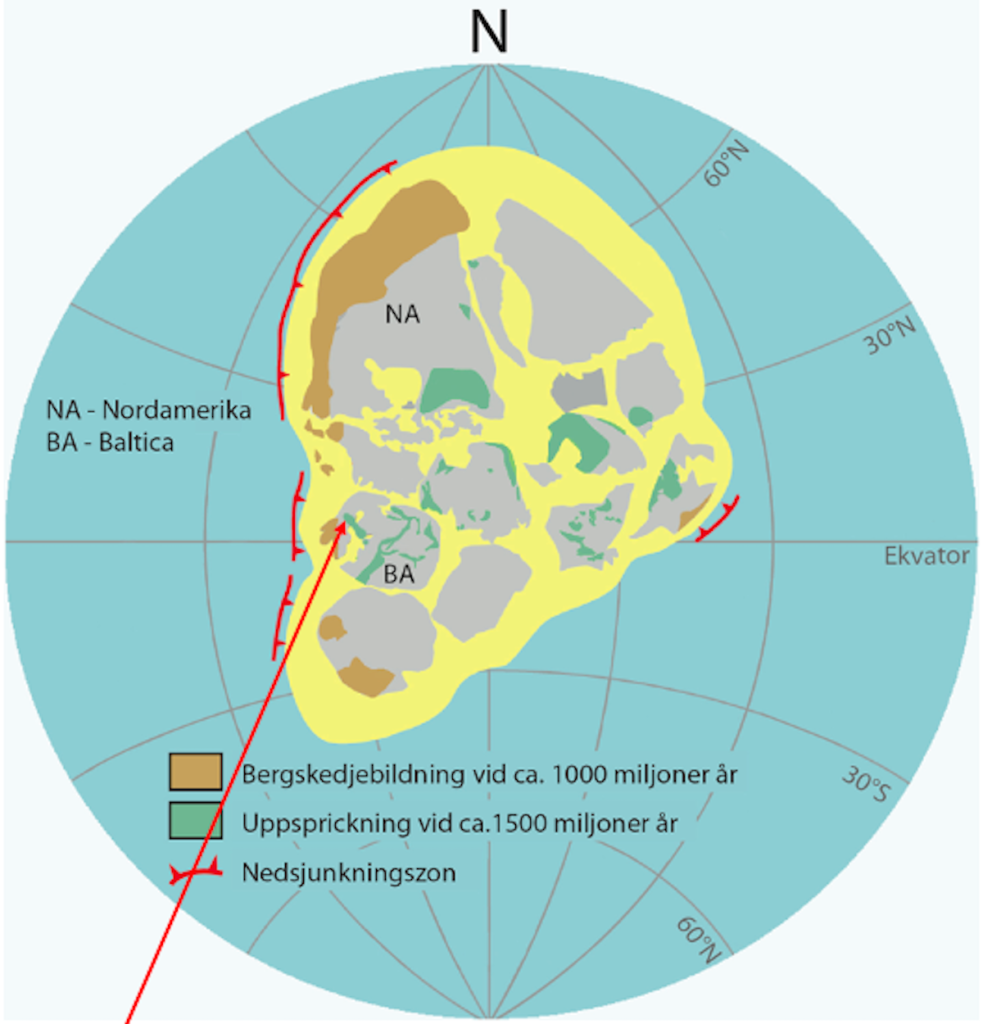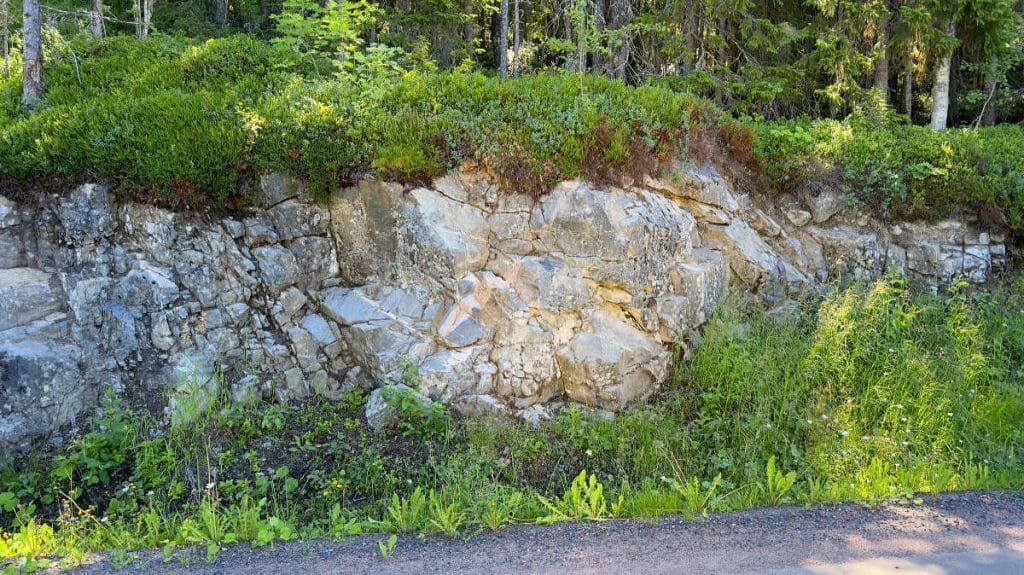Theme Continental Drift
Theme Continental Drift is a story about how the extension of the crust some 1,500 million years ago led to the formation of world unique magma chambers in Ragunda.
The supercontinent Columbia
2,000 million years ago the earth was mainly covered by oceans. Small masses of land, continents moved around the globe aided by movement in the liquid core of the earth.
In due course these continents collided and formed one single supercontinent, Columbia. It happened during a period between 2,000 and 1,700 million years ago. Most of what was to become Sweden was formed in this process.
Supercontinents are not particularly stable. They crack and bend due to movements in the earth's interior. There, the rock is partially liquid.
At different times and in different areas, the outermost layer of the earth, the crust, was stretched. Weak zones formed in the many kilometres thick crust. In some places the supercontinent cracked.
When the crust was stretched in Ragunda 1,500 million years ago, a weak zone formed, stretching from southern Finland in the east, westbound through Ragunda and onwards to the land now forming the Swedish mountain range.

Melted masses of rock formed magma chambers
The crust became thinner and the pressure on the underlying rock and melted masses, magmas was reduced. This enabled two kinds of magmas formed deep within the earth to press upwards through older bedrock towards the earth´s surface, rather like bubbles when you open a bottle of sparkling water.
When the magmas failed to rise any higher towards the surface they remained at a depth of about three kilometres. There they formed several magma chambers, a bit like enormous balloons. The magma chambers raised the crust of the earth to form rounded shapes. In total, the magma chamber area covers approximately 550 km².
When in due course the magmas cooled and became solid they formed rocks. One magma was red in colour and became granite, the other was dark, almost black, and became gabbro. The magmas were of completely contrasting compositions and so behaved in different ways.

The magmas affected each other
Pulses of warm magma were continuously adding to the magma chamber from below. Magma that had already solidified could then heat up and become liquid again. The magmas interacted in batches, forming different patterns depending on whether they were liquid at the same time or not. Gabbro and granite melt at different temperatures. Gabbro is several hundred degrees warmer when melted compared to granite. The difference in temperatures between the two magmas meant that they would not fully blend everywhere.

Magma mingling – "pillows" of gabbro in granite
Once the magmas cooled off and became solid, they formed different patterns, and in many places you can see patterns of the gabbro in the granite, looking like pillows. This is called magma mingling and occurred at the time when both magma types were partially liquid at the same time.
The magmas may have been cold, hot or tepid at the time of the encounters. Around the gabbro you can sometimes spot a darker outer edge; this appeared when the warmer gabbro cooled off quicker in contact with the colder granite.

Magmatic breccia – angular fragments of gabbro in granite
At times the gabbro magma had started to cool off or become cold before a new pulse of hot granite magma came pushing upwards. This would cause the gabbro to crack and break into angular fragments. This is called magmatic breccia.
In case the almost solid granite encountered a pulse of hot gabbro, the granite may have been a bit burned by the gabbro. This would be seen as a white edge around the granite.

Magma mixing - mixed magmas
When magma had the possibility to harden slowly it remained warm for longer and heated up its environment. Magmas of different compositions could blend and become solid at the same time. Crystals from one of the magmas could merge with another and eventually dissolve. A new rock was formed, a sort of hybrid rock.
Hybrids contain minerals that in normal circumstances would not co-exist. The rocks can be difficult to see and identify since they can appear in so many different ways.

Having a look into the magma chamber
All the material once located above the magma chambers has worn down and eroded. Material has been ground and carried off by the wind, water and ice. A unique opportunity in Ragunda is the possibility for us to look into a 1,500 million year old magma chamber that was formed several kilometres down in the crust.








